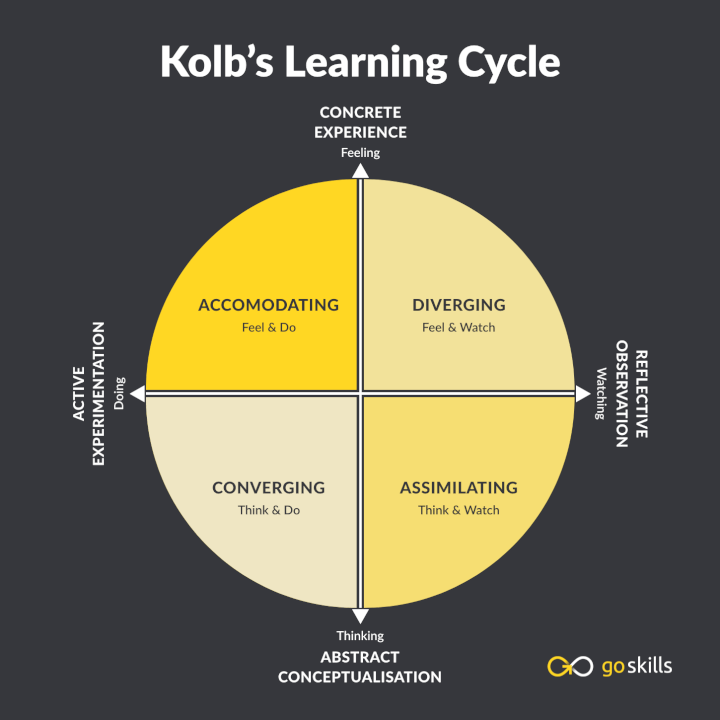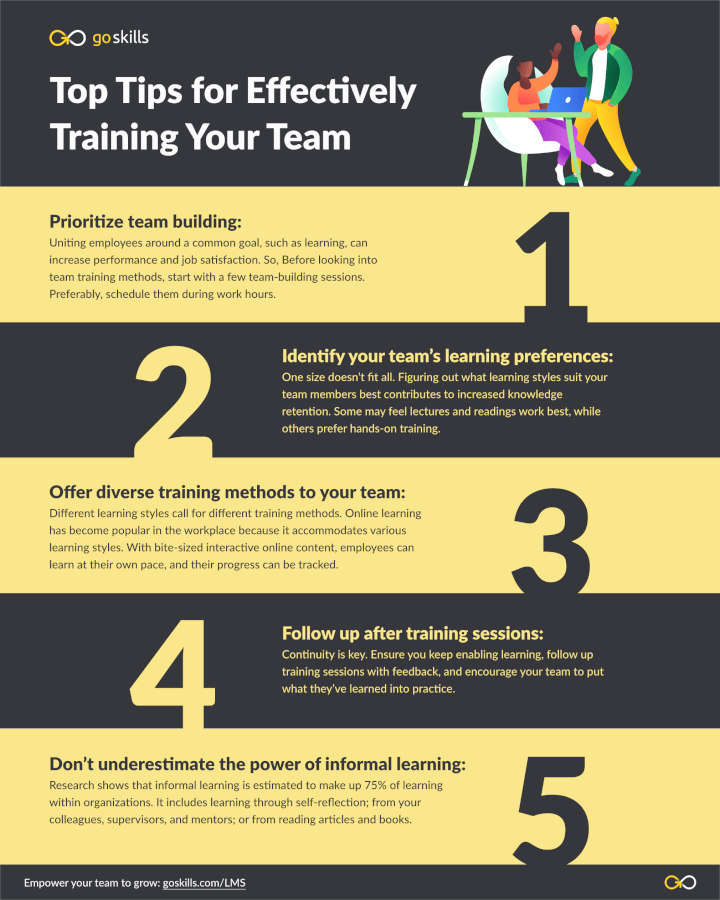Are you sitting at your desk right now, scratching your head, wondering how you could train your team and improve their effectiveness?
You may be one of those kick-ass bosses who just like continuing team development and creating the best team in your organization. Whatever the reason, team training in the workplace is the way forward.
While you may have heard the time and costs involved in training and development are a drawback, the costs of not training are far greater—such as higher turnover, poorer work quality, and lack of loyalty. Training your staff as a team means they can better fill in for each other, and their productivity and morale will increase.
Recent research by Deloitte shows that team-based organizations are on the rise, and shifting the organizational structure from a traditional hierarchy towards a team-based model improves performance.
So, it’s no surprise that as organizational team structures increase, practical team training is becoming a necessity.
Want to boost your team's success?
Learn why training and development matters (and how to do it right)!
Benefits of teamwork in your organization
The same Deloitte study says:
In the long term, we believe there will be no leading organization that does not work primarily on the basis of teams
Having your employees share the work in a team based on their strengths increases productivity and morale, and ultimately means less frustration. One study concluded that groups outperform individuals in situations where neither have any expertise on the task they’ve been asked to do. This is called the “effect of synergy.”
Another study from 2017 shows that teamwork, when done well, impacts team performance, group cohesion, collective efficacy, and member satisfaction.
In short, you stand stronger together. So, how do you effectively train your team and encourage teamwork? Here are five tips for a winning team:
How to effectively train your team in the workplace: 5 tips for success
1. Focus on team building first and foremost
To create that synergy mentioned earlier, your team needs to spend time together and get to know each other. Your employees often spend more time together during the week than with their family. But do they know each other? Do they understand each other? It’s one thing working alongside someone; working together is different. Research shows that team building positively affects many different areas of the workplace: goal setting, relationships, and problem-solving.
So, before looking into team training methods, start with a few team-building sessions. While you’re at it, schedule those activities during work hours and be creative. Go off-site, have fun, and don’t make it a competition.
2. Find out how your team members prefer to learn
One size doesn’t fit all. Diversity is key, not only within the workforce but also in the way you present learning opportunities to your team. Catering to your team's different learning needs is hugely important to the success rate of the training and to increasing learning retention.
But where do you start? The Kolb four learning styles can help you determine how your team members prefer to learn and what training style might suit them best.

Feeling and watching (diverging): People with this learning style prefer to watch rather than do, gather information, and use their imagination to solve problems.
Watching and thinking (assimilating): This learning style prioritizes ideas and concepts. They prefer readings, lectures, exploring analytical models, and having time to think things through.
Doing and thinking (converging): These types of learners are good at problem-solving and using what they’ve learned to solve practical problems. They prefer technical tasks over solving social issues.
Doing and feeling (accommodating): People who prefer this style rely on intuition more than logic. They like new challenges, carrying out plans, and working in teams.
Someone with an assimilating learning style may not feel comfortable being thrown into the deep end with hands-on training without prior lectures or lessons. On the other hand, someone who has a converging learning style may tap out quite quickly in a lengthy think tank-type brainstorming session.
3. Offer different training methods to individuals in your team
Once you’ve figured out what styles your team members prefer and your objectives with team training, it’s time to look at how you can train your team in the workplace.
Research shows that time, workload demands, budget constraints, and working remotely make it harder for formal training programs to be successful. Not everyone has the attention span to sit through a day of training, take in, and remember all the new information. Research from LinkedIn shows that 58% of employees prefer to learn at their own pace.
Here’s where online training comes in. With platforms like GoSkills, your team can learn together or at their own pace with bite-sized and interactive content. They can do blended learning (a mix of online and face-to-face training), and tracking learner progress is easy. You might feel your team should go through the online course videos together in the same room and let them complete certain quizzes and exercises individually in their own time.
Choosing the right type of training for your team depends on many aspects, including their training needs, how they learn, the training goal, your budget, and how much time you want to spend on training.
4. Follow up after training sessions
You may think you can sit back and relax once you’ve trained your team. Not quite. Once the training is done, your team's development doesn’t stop. Continuity is key. Ensure you keep enabling learning, follow up training sessions with personal feedback (avoid mass feedback), and give your team extra responsibility following their training. You could create incentives to encourage your team to put what they’ve learned into practice.
By emphasizing continuous learning, you’re showing your team that their development is a priority to your organization. By following up training with new tasks, regular meet-ups, or additional training, you’re avoiding the newly learned information falling to the wayside or getting buried by business-as-usual jobs. Using a cloud-based learning management system like the GoSkills LMS makes tracking and managing your team’s training easy over time.
5. Don’t underestimate the power of informal training
It’s easily overlooked, but informal learning is estimated to make up to 75% of learning within organizations. It includes learning through self-reflection, learning from colleagues, supervisors, and mentors, and learning from articles and books. This is where investing in team building also comes in because the better your team gets along, the higher the chance they learn informally from each other.

5 benefits to training your team
Employee development is so much more than a buzzword. In fact, true workplace training offers some major perks—not only for your employees but also for your entire organization.
Like what? Well, we’re so glad you asked. Below, we’re breaking down several of the most notable benefits of training and development in the workplace.
1. You’ll build a more skilled workforce
This first benefit seems obvious, but believe it or not, it’s one that’s often overlooked.
By equipping them with the information and training they need to do their jobs well, you ensure you have a capable staff and give their productivity levels a major boost.
Additionally, focusing on learning and development enables organizations to more efficiently get new employees up to speed about their new roles. As you might guess, a speedier onboarding process and more skilled and confident staff can do big things for a business’s bottom line.
That’s important, especially considering that one study of employees in the U.S. and the U.K. discovered that businesses lose an estimated $37 billion yearly because employees don’t understand their jobs.
2. You’ll increase employee engagement
Data from Gallup shows that only 34% of employees are engaged in their work. That means companies are constantly looking for ways to keep their employees' attention and appreciation.
Well, focusing on learning and development can help. Quantified studies are hard to come by, but one conducted with U.K. employees found that those who had formal personal development plans and received regular performance reviews in the past year had engagement levels that were significantly higher than those who didn’t.
3. You’ll improve employee retention
You’d probably guess that higher engagement leads to higher retention—and you’d be right.
It’s no secret that your employees want opportunities to learn and develop at work. They’re eager to grow and advance, and you don’t want them to feel like the only way up is out. That’s why prioritizing training and development can inspire your top talent to stick around. In fact, a learning culture has been said to lead to 30-50% higher retention rates at companies.
4. You’ll boost your employer brand
Employee training and development can mean big things for your existing team members—but it’s helpful for recruitment as well. Showcasing the various learning opportunities you offer bolsters your employer brand and attracts top talent.
But do candidates actually care about your development offerings? One report from Workplace Intelligence indicates that 74 percent of millennials and Gen Z say they would leave an organization if there were a lack of skills-building support or career mobility options.
5. You’ll foster a sense of camaraderie
Finally, chances to explore new topics, refine new skills, and expand their knowledge present an opportunity for your team members to bond with each other.
They tackle new challenges together and can also lean on one another for various learning opportunities by collaborating with colleagues in specific areas of expertise. Research found that 48% of survey respondents said peer collaboration is their preferred learning method.
Final word
There’s no doubt that you stand stronger together and ultimately can do more as a team than an individual in the workplace. Training your employees as a team encourages teamwork, increases productivity, and creates positive relationships. By following these five steps to promote a learning culture in your organization, you’ll be better positioned to create a winning team.
- Focus on team building first and foremost
- Find out how your team members prefer to learn
- Offer different training methods to individuals in your team
- Follow up after training sessions
- Don’t underestimate the power of informal learning
Check out the GoSkills learning management system to find out how your team can learn together, or at their own pace, with bite-sized and interactive content.
Train any size team
It's easier than ever to track and manage your team's training with the GoSkills LMS.
Start for free



